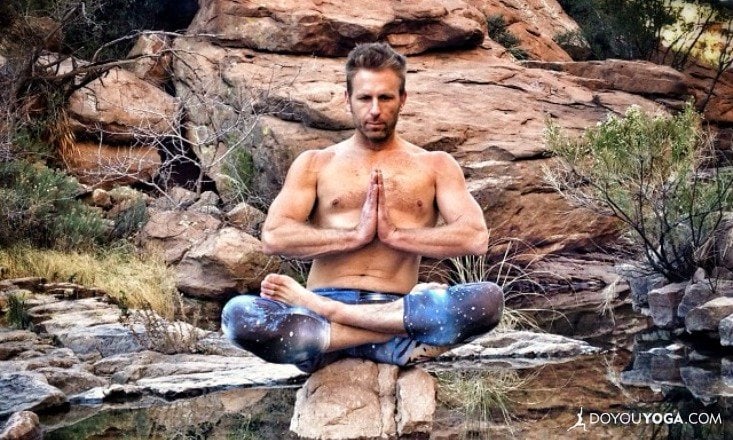There is a strong connection between our breath and our state of mind. Look at someone who is upset or angry, and you will find that their breath is disturbed. Look at a happy person and you will see that their breath is deep and regular!
The mind and the breath are deeply connected: When we don’t pay attention, the breath just happens. It is the same with our thoughts; when we don’t pay attention to them, they just happen.
But when we do pay attention to the breath, we can decide when to inhale, exhale, and when to hold our breath. The same with the mind; we can learn to direct our thoughts consciously if we just pay attention to them.
How to Change Your Breath and State of Mind
The following yogic breathing exercises to improve your mood will consciously change/control the breath and to make our mind steady, focused and peaceful.
For kids yoga teachers: children over the age of nine have more awareness of their breath and can begin practicing yogic breathing exercises which involve manipulating the breath.
1. Shapes Breath
Sitting in front of one another, one partner guides the other's breathing by asking them to follow the movements of their hand with their breath. When she raises her hand upward (slowly), it means inhale; when she moves her hand horizontally, it means hold the breath; and when she moves her hand downward, it means exhale.
The leading partner can draw an imaginary square with their hand causing their partner to inhale, hold the breath, exhale, hold the breath etc. in a rhythmic way. If you do it for a minute or two, you will feel deeply relaxed.
Try with different shapes such as lines, triangles, stairs and circles. Switch roles when ready. The teacher or a student can also lead the whole group in this exercise.
2. Counting the Breath
Sit up tall, and as you inhale and exhale, count your breath. It’s hard to count aloud and breathe at the same time, so count using your fingers or have the teacher count aloud for everyone.
You can practice any of the following breathing rhythms or invent new ones:
- Inhale 5, exhale 5
- Inhale 4, exhale 8
- Inhale 4, hold the breath for 4, exhale 4
3. Diving Breath
Stand at one end of the room and take a deep breath. Hold the air in and ‘dive’ under the water, walking and making swimming motions with your arms, hold your breath until you reach the other side of the room.
4. Alternate Nostril Breathing
According to yoga, this change between the two nostrils helps to keep the balance in our body. The right nostril, connected to the left-brain, is considered to carry the sun energy; the masculine energy. The left nostril, connected to the right-brain, harnesses the moon energy; the feminine energy.
When we breathe through only one nostril for a long time, an imbalance is created and we start feeling either more nervous and angry (if the right nostril is dominant), or more anxious and afraid (if the left nostril is dominant).
This exercise is like preventative medicine because it helps to keep a regular and harmonious flow between the two nostrils.
I learnt the following technique from Marilyn Rossner, whom I have known for many years, I and often use it at home with my own children and in classes with children with additional needs. This exercise has been so effective in helping calm students—young and old(er) alike.
To do the full exercise:
- Sit up tall and, using your right thumb, block your right nostril. Inhale slowly and deeply through your left nostril.
- Close both nostrils using your right thumb and index finger and hold your breath for a few seconds or for as long as comfortable.
- Open your right nostril, keeping your left nostril closed with your index finger, and exhale slowly and fully.
- Inhale through your right nostril slowly and deeply.
- Close both nostrils and hold your breath for as long as comfortable.
- Open your left nostril, keeping your right nostril closed with your thumb, and exhale slowly. This is one round.
- Practice 3-5 rounds. If holding the breath is too difficult for the children, skip stages 2 and 5.
5. Prana Breath
Our breath is fundamentally connected to our bodies and our minds. Children breathe and don’t even realize that they are doing it! This exercise helps them become aware of their breath; that it is constantly moving and that no two moments are the same.
‘Prana’ means vital force. We cannot live without our breath; to live is to breathe and to breathe is to live.
Fun Breath Awareness Exercise for Kids
Give the children a large piece of paper and ask them to stand on the edges. Give them two markers, one for each hand. Bending forward, ask them to gently rest the tips of the markers on the paper. Now, with everyone closing their eyes, using only our breath to move our bodies, allow the markers to move with the breath.
Surrender and completely let go, move with the flow of your every breath.
Experiment, can you move one marker with your in-breath and the other with your out-breath? You can also use this exercise as a group meditation. Give each child a different colored marker and a piece of paper. Stand in a circle.
Using a prayer bowl, allow the children to breathe and draw for one chime and then pass their piece of paper around to the next person. Repeat this until the paper has made its journey the whole way around the circle.
Can you see any hidden images in your beautiful rainbow Prana picture? You can even get your friend to sign the back in their very own color. Breathe and enjoy!
Image credit: Gordon Ogden



